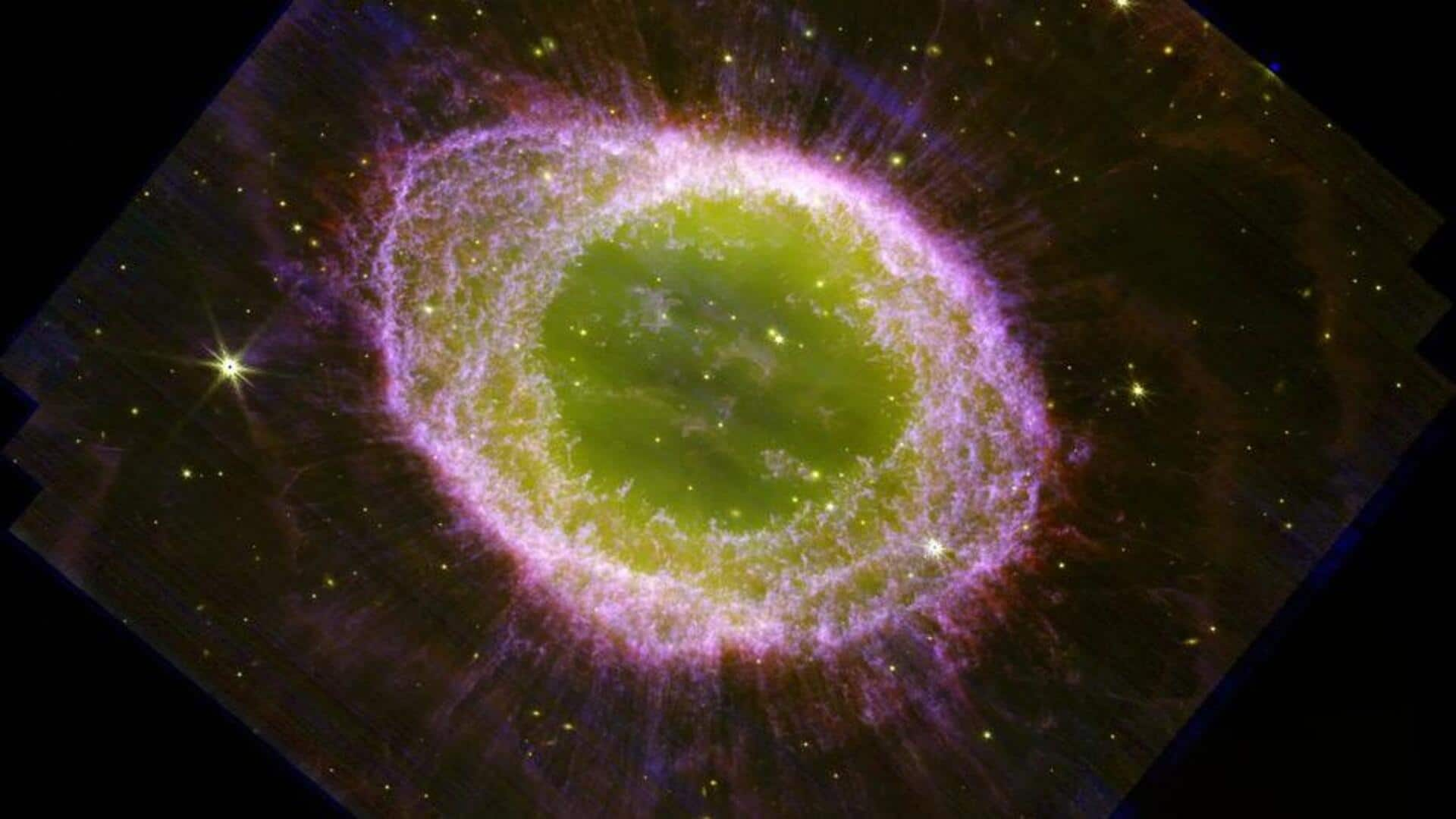
NASA's JWST records stunning details of Ring Nebula
What's the story
The James Webb Space Telescope (JWST) has captured a breathtaking image of Ring Nebula, or Messier 57 (M57), unveiling intricate details of the cosmic object. Located about 2,200 light-years away in the Lyra constellation, M57 is the glowing remains of a dead star. Webb's image reveals the growing shell of the nebula and the inner region surrounding the stellar remains with remarkable clarity.
Details
Ring Nebula observations can shed light on solar system's future
Once stars—bearing similar sizes to our Sun—run out of fuel, their core collapses. This causes the star's outer layer to be blasted outwards. This layer eventually cools down forming various shapes like wispy clouds, expanding bubbles, or ring-shaped nebulas like M57. Observations of this system can thereby offer insights into what our solar system might look like in billions of years.
Insights
Unraveling mysteries of stellar evolution with Webb
By analyzing the colors emitted by the gas and dust in Ring Nebula, astronomers can gather information about chemical processes occurring therein. Interestingly, astronomers found large carbonaceous molecules in the cosmic object but further research is needed to understand how those molecules ended up there. Webb's latest image offers a wealth of knowledge about the processes involved in stellar evolution.
Process
Ring Nebula can be viewed face-on from Earth
Notably, the Ring Nebula's tilt allows us to view it face-on from Earth, making it a captivating target for astronomers. The donut-shaped glowing cosmic object can be spotted with a moderately sized telescope. The best time to view this Ring Nebula is during summer, from June through August. It was discovered by Antoine Darquier de Pellepoix, a French astronomer in 1779.